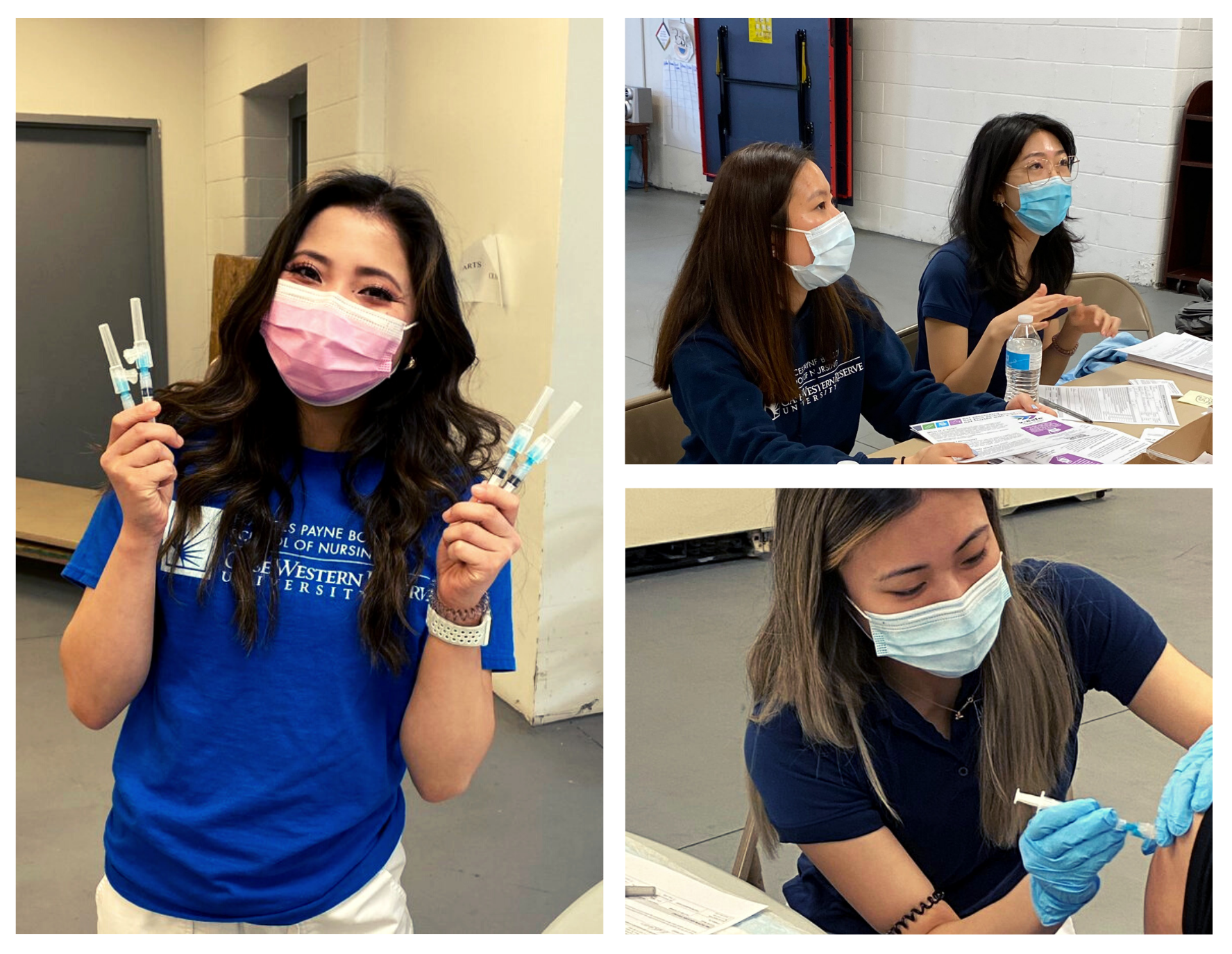Nursing faculty and students step up to administer COVID-19 vaccines
After a year marked by loss and struggles relating to the COVID-19 pandemic, the rollout of vaccines late last year offered many a sense of joy and relief—something faculty and students at Frances Payne Bolton School of Nursing witnessed firsthand.
Starting in March, about 120 nursing students from the BSN and MSN programs, alongside Case Western Reserve’s medical and physician assistant students, administered more than 20,000 COVID-19 vaccines with the help of faculty members and community partners.
Across the city—including at Case Western Reserve’s own vaccination clinic—as many as 20 CWRU students each day staffed vaccine sites, led in their efforts by School of Nursing Assistant Professor Jesse Honsky (NUR ’12, ’17; GRS ’12, public health), DNP, RN, and instructor Shannon Wong, CNP, RN.
“There were smiles, laughter, and tears,” said Honsky. “It was an honor to share that experience with so many people and to provide them with some hope.”
In addition to administering vaccines, the students helped organizations contact patients who were on a waitlist for a vaccine; assisted with COVID-19 symptom screening at University Hospitals’ entrances; and screened and welcomed donors at Red Cross blood donation sites around greater Cleveland.
Forefront sat down with Honsky and Wong to ask them about their experiences.
How did this effort of leading nursing students in assisting with COVID-19 vaccinations come about?
Jesse Honsky: After the pandemic started, the local health departments reached out to us to talk about how we could partner and they could work with nursing students. Shannon had worked with both the city and county health departments in the fall of 2020, taking nursing students to flu vaccination clinics. She built a good relationship with both organizations, so when they were ready to start COVID-19 vaccinations, we were ready to help. During winter break, Shannon organized other faculty to volunteer at COVID vaccination clinics so we would be prepared to take students.
Shannon Wong: We provided students with training on intake, education, drawing/preparing the vaccine, administering the vaccine, paperwork to chart that the vaccine was given, and monitoring patients after they were given the vaccine.
What was the most memorable moment of this vaccine effort for you?
SW: We took a team of 14 nursing students and three faculty members to a community center clinic that was terribly busy. They set up a mobile unit of our students, who went to people needing the vaccine who had limited mobility. Our students had to adjust their training to accommodate the needs of the patients. They quickly worked together as a team, figuring out how to move the equipment to each person, track the people who had received the vaccine and complete the necessary paperwork. Our students stepped up to participate in a way that they were ready for, but hadn't had to do before.
What was it like to watch nursing students help during a global pandemic?
JH: The nursing students really rose to the challenge. They were eager to help out and adapted well. Early on in the vaccine drive, the vaccine supply was limited, so we often only had a few days' notice to organize some of the student volunteers—but they made it happen. We also had a number of students step up into leadership roles when working with their peers and students in other professions. I think this experience helped them understand the role and importance of nurses in public health.
—Alaina Bartel


